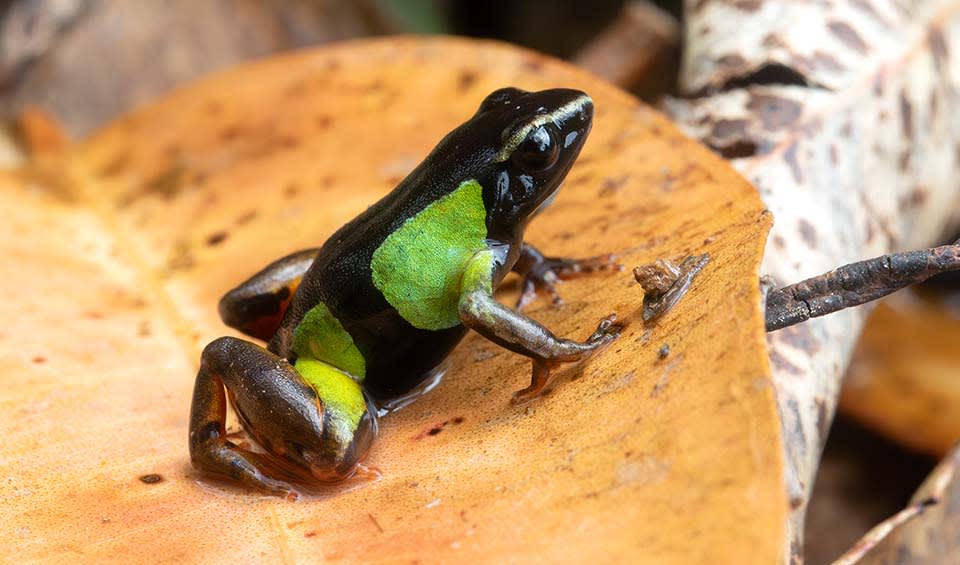Mantella
Their diet is crucial not only for their survival but also for accumulating the alkaloids that make them poisonous
A fascinating group of brightly colored frogs native exclusively to Madagascar, similar in appearance and ecological niche to the better-known poison dart frogs of South America. These small, often vibrantly hued amphibians are a prime example of convergent evolution, where species from different lineages develop similar traits due to equivalent ecological roles and pressures.
Mantella frogs are generally small, ranging in size from about 2 to 3 cm in length. They display a variety of striking colors—from brilliant greens and blues to yellows and oranges— which serve as a warning to potential predators about their toxicity. Despite their bright colors, these frogs are not born poisonous but acquire their toxins from the insects they eat. They thrive in a range of environments but are always near sources of water, which is crucial for their reproductive cycle. Different species have adapted to very specific local conditions, which is why conservation of their natural habitat is vital for their survival.
Mantella frogs are diurnal and primarily insectivorous, feeding on a diet of ants, termites, fruit flies, and other small insects. This diet is crucial not only for their survival but also for accumulating the alkaloids that make them poisonous. These frogs are generally not territorial and are often seen in groups, especially during the breeding season when males call to attract females.
Species in this genus
Black-eared mantella
Ears? Not quite — but the name sticks
Golden mantella
Their glowing skin isn’t just for show — it’s a bright neon “do not eat me” sign
Madagascan mantella
Beautiful but toxic—not to humans though




